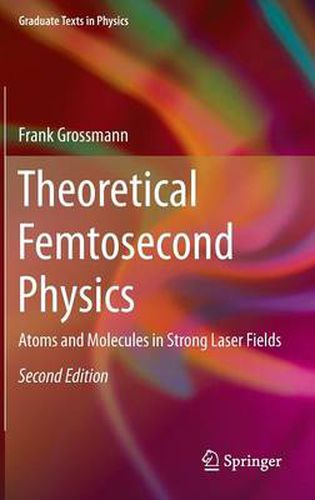Readings Newsletter
Become a Readings Member to make your shopping experience even easier.
Sign in or sign up for free!
You’re not far away from qualifying for FREE standard shipping within Australia
You’ve qualified for FREE standard shipping within Australia
The cart is loading…






This title is printed to order. This book may have been self-published. If so, we cannot guarantee the quality of the content. In the main most books will have gone through the editing process however some may not. We therefore suggest that you be aware of this before ordering this book. If in doubt check either the author or publisher’s details as we are unable to accept any returns unless they are faulty. Please contact us if you have any questions.
Theoretical investigations of atoms and molecules interacting with pulsed or continuous wave lasers up to atomic field strengths on the order of 10^16 W/cm(2) are leading to an understanding of many challenging experimental discoveries. This book deals with the basics of femtosecond physics and goes up to the latest applications of new phenomena. The book presents an introduction to laser physics with mode-locking and pulsed laser operation. The solution of the time-dependent Schroedinger equation is discussed both analytically and numerically. The basis for the non-perturbative treatment of laser-matter interaction in the book is the numerical solution of the time-dependent Schroedinger equation. The light field is treated classically, and different possible gauges are discussed. Physical phenomena, ranging from Rabi-oscillations in two-level systems to the ionization of atoms, the generation of high harmonics, the ionization and dissociation of molecules as well as the control of chemical reactions are presented and discussed on a fundamental level. In this way the theoretical background for state of the art experiments with strong and short laser pulses is given. The text is augmented by more than thirty exercises, whose worked-out solutions are given in the last chapter. Some detailed calculations are performed in the appendices. Furthermore, each chapter ends with references to more specialized literature.
$9.00 standard shipping within Australia
FREE standard shipping within Australia for orders over $100.00
Express & International shipping calculated at checkout
This title is printed to order. This book may have been self-published. If so, we cannot guarantee the quality of the content. In the main most books will have gone through the editing process however some may not. We therefore suggest that you be aware of this before ordering this book. If in doubt check either the author or publisher’s details as we are unable to accept any returns unless they are faulty. Please contact us if you have any questions.
Theoretical investigations of atoms and molecules interacting with pulsed or continuous wave lasers up to atomic field strengths on the order of 10^16 W/cm(2) are leading to an understanding of many challenging experimental discoveries. This book deals with the basics of femtosecond physics and goes up to the latest applications of new phenomena. The book presents an introduction to laser physics with mode-locking and pulsed laser operation. The solution of the time-dependent Schroedinger equation is discussed both analytically and numerically. The basis for the non-perturbative treatment of laser-matter interaction in the book is the numerical solution of the time-dependent Schroedinger equation. The light field is treated classically, and different possible gauges are discussed. Physical phenomena, ranging from Rabi-oscillations in two-level systems to the ionization of atoms, the generation of high harmonics, the ionization and dissociation of molecules as well as the control of chemical reactions are presented and discussed on a fundamental level. In this way the theoretical background for state of the art experiments with strong and short laser pulses is given. The text is augmented by more than thirty exercises, whose worked-out solutions are given in the last chapter. Some detailed calculations are performed in the appendices. Furthermore, each chapter ends with references to more specialized literature.